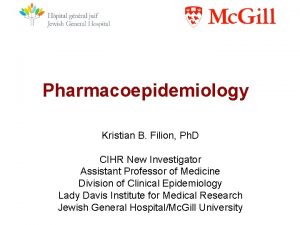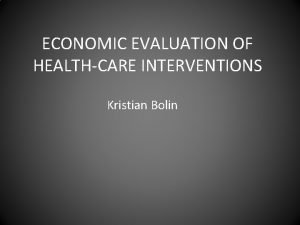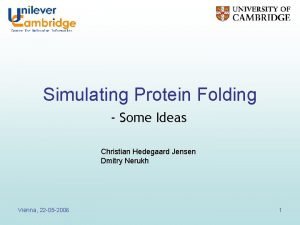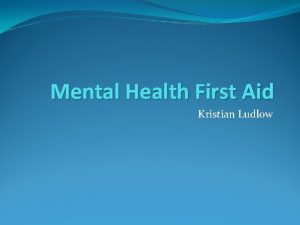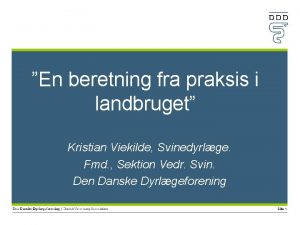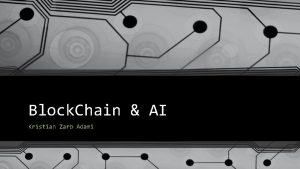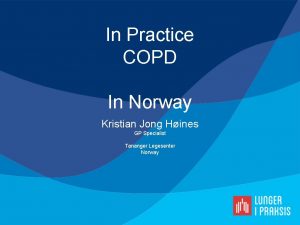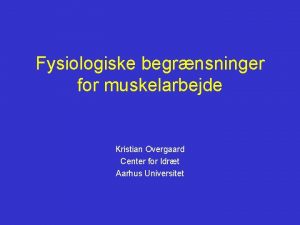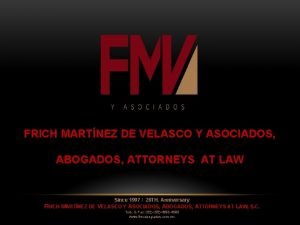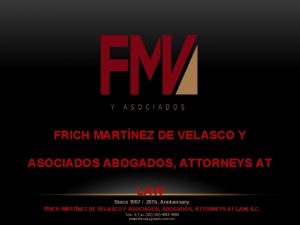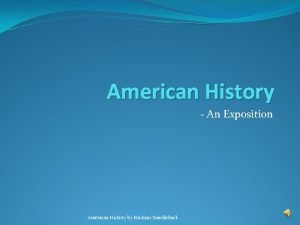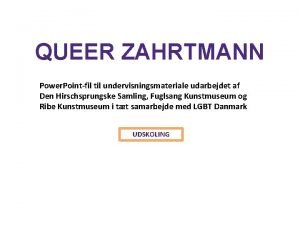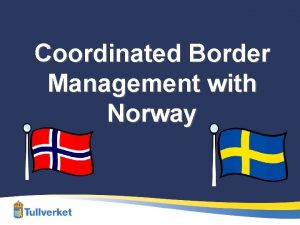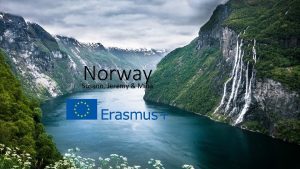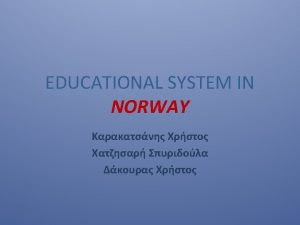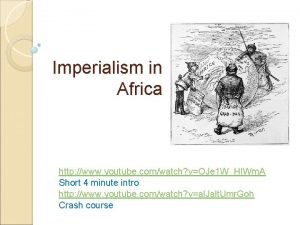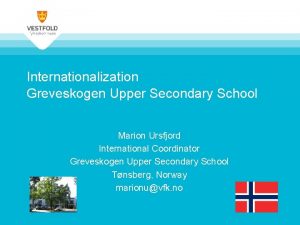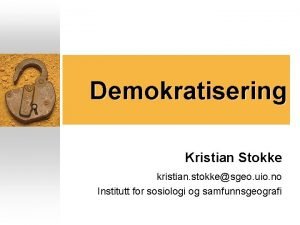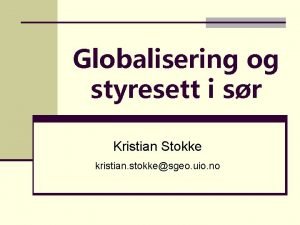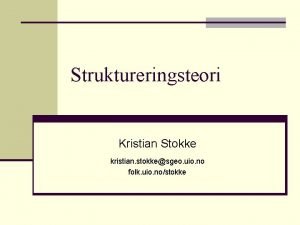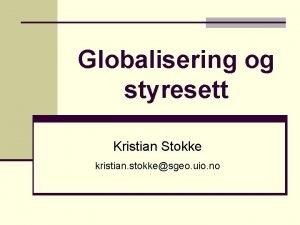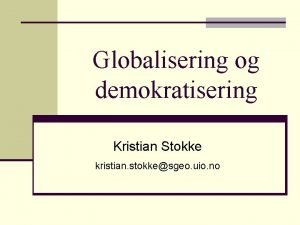Education in Norway Hans Kristian Voje Headmaster Greveskogen












- Slides: 12

Education in Norway Hans Kristian Voje Headmaster Greveskogen Upper Secondary School Tønsberg, Norway hansvo@vfk. no

AGE 31% 68% finish and pass 95% UNIVERSITIES AND UNIVERSITY COLLEGES Doctorate (3 years) Master`s degree (2 years) Bachelor`s degree (3 years) APPRENTICESHIP TRAINING 19 - 27 19 UPPER SECONDARY SCHOOL LOWER SECONDARY SCHOOL 18 16 - 17 13 - 15 100% 89% PRIMARY SCHOOL 6 - 12 Kindergarten 0 - 6

Programmes in Upper Secondary Education • Programmes for General Studies: 1. 2. 3. • Specialisation in General Studies Sports and Physical Education Music, Dance and Drama Vocational Education Programmes: 4. 5. 6. 7. 8. 9. 10. 11. 12. Building and Construction Design, Arts and Crafts Electricity and Electronics Health ans Social Care Media and Commnication Agriculture, Fishing and Forestry Restaurant and Food Processing Service and Transport Technical and Industrial Production

Greveskogen Upper Secondary School • 1 100 pupils • 206 employees, 149 teachers • School leaders: – Headmaster (100%) – Vice headmaster (100%) – 6 -8 programme managers (mostly 100%)

Spesialication in General Studies • • Natural science Foreign languages Social science Economics

Music, Dance and Drama

Vocational Education Programmes 1. Service and Transport

Vocational Education Programmes 2. Restaurant and Food Processing

Education in Norway (1) • Education is free and for all – pupils and students get financial support from the state (loans and grants) • Strict national standards through legislation, curricula and framework plans • Public education dominates (only 3% of the pupils in private schools) • The private schools are funded (85%) by the state

Education in Norway (2) • Unifying important – all children are to share a common foundation of knowledge, culture and values • 6, 6% of gross domestic product spent on education (average for OECD-countries 5, 9%) • English compusory foreign language from grade 1 • Ambitious programme for digital competence – all pupils in upper secondary school have a laptop PC • Young people have a right to three years upper secondary education (at one of three programmes they apply for)

Education in Norway (3) • Right to special needs education for pupils who don`t get satisfactory learning yield from the ordinary teaching • School owners (municipalities, counties, the state) expect specified results (national test results, marks, % that finish and pass) • Local freedom of teaching metods and in how to organize • Transparancy: the school`s results and use of resources easily acessable for the public on a website

Challenges: • Disappointing results in international surveys (PISA, TIMMS, PIRLS) • Many dropouts in upper secondary school (easy for young people to get a job) • Hard to motivate many pupils • The teaching methods are not varied enough • Half of the teachers in upper secondary school are more than 50 years old • Decreasing status of education and teachers • Very commercialized youth culture
